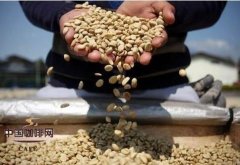Correct understanding of instant coffee based on instant coffee knowledge

The decline and growth of coffee around the world has also led to a multi-dimensional development of coffee, and the deepest impact is the problem of instant coffee (Instant Coffee Powder Powder).
Instant coffee has the characteristics of easy to use, breaking the usual bundles of brewing coffee, and quickly integrated into the food industry. In China, instant coffee is of great use. In addition to being used for self-brewing, in the food processing industry, it can be made into coffee ingredients, three-in-one coffee powder and various kinds of coffee flavors. such as candy, milk, pudding, fruit, ice and baked goods, it is one of the important food raw materials in China.
Instant coffee has several generations of products, but the first stage of the processing process is the same, such as the selection, mixing, roasting, grinding and extraction of raw beans. The main difference lies in the different drying methods and external processing, in which each generation of products have their own usefulness, depending on the use. This paper describes the manufacturing process and product specification of instant coffee powder.
Raw or dry processed raw coffee beans, or Robusta and Arabica coffee beans can be used to produce instant coffee powder. Raw coffee beans are usually packed in sacks of 60 kg each, such as Robusta raw coffee beans from Brazil, Kenya and Africa; there are also packages of different weights, such as those from Costa Rica and Central / Latin America, which usually weigh 70 kg, as well as packages of 75, 80 and 90 kg.
The water content of raw coffee beans is less than 12%. At this level, the growth and enzyme activity of fungal bacteria are reduced to a minimum. Therefore, special attention should be paid to the control of temperature and environmental hygiene in Hong Kong, so as to avoid deterioration of raw beans and affecting the quantity of the most expensive products.
Due to the different added value of different grades of raw beans in the market, most instant coffee powders are not made from the highest grade raw beans, but mainly from ordinary raw beans. If this is the case, it is also necessary to choose raw beans with less disease, less scavenging, less broken beans, both in shape and size, otherwise you will not be able to produce products that are desirable to consumers.
The main principle for choosing raw beans is based on the consideration of flavor volume and cost. Of course, there is also a single coffee product on the market, but most instant coffee is blended coffee.
In the selection of coffee beans, it is difficult to understand the quantity of each variety and the characteristics of the source beans and the adaptability between them, in order to produce products that are suitable for fragrance and cost control, such as Robusta raw coffee beans from Indonesia, which can easily be imported from other sources.
In terms of cost control, the mixed raw beans of low-grade instant coffee will contain a large amount of Rrobusta raw beans or poor Brazilian beans. For those with sour taste and strong taste, Arabica raw beans processed in Chinese style and Brazilian raw beans with high grade are the main ones.
In addition to the consideration of fragrance and cost, the mixing of raw coffee and beans also has other advantages. The mixing of coffee beans can make the products meet the requirements of long-term stability, and the stability is reduced to a minimum. It is impossible to use a single source of raw coffee beans to meet the requirements of stability. In addition, the sudden shortage of symptoms caused by illness or illness can be avoided.
The selected raw beans can be roasted separately, then mixed, or mixed first, and then roasted together. The choice of these methods depends on such factors as the proximity of the amount of coffee beans and the size of raw beans, usually mixing first and then roasting.
Important Notice :
前街咖啡 FrontStreet Coffee has moved to new addredd:
FrontStreet Coffee Address: 315,Donghua East Road,GuangZhou
Tel:020 38364473
- Prev

An Analysis of the Flavor of Coffee
Flavor [flavor] is the overall impression of aroma, acidity, and mellowness, which can be used to describe the overall feeling of contrast coffee. Acidity [acidity] is the acidity and strong quality of all coffee grown on the plateau. The sour and sour mentioned here is different from bitterness or sour (sour), and it has nothing to do with pH, but promotes coffee to perform functions such as refreshing the mind and clearing the taste.
- Next

The comparison of coffee beans the difference between Arabica and Robusta
In many places where coffee is sold, it is not difficult to find words like "100% Arabica". Even canned coffee appears in a style called "XX Arabica Coffee", which makes one wonder: what is "Arabica Coffee"? In fact, Arabica is the name of the coffee tree variety (species). Arabica (Coffea Arabica) and Robusta (Cof)
Related
- Beginners will see the "Coffee pull flower" guide!
- What is the difference between ice blog purified milk and ordinary milk coffee?
- Why is the Philippines the largest producer of crops in Liberia?
- For coffee extraction, should the fine powder be retained?
- How does extracted espresso fill pressed powder? How much strength does it take to press the powder?
- How to make jasmine cold extract coffee? Is the jasmine + latte good?
- Will this little toy really make the coffee taste better? How does Lily Drip affect coffee extraction?
- Will the action of slapping the filter cup also affect coffee extraction?
- What's the difference between powder-to-water ratio and powder-to-liquid ratio?
- What is the Ethiopian local species? What does it have to do with Heirloom native species?

